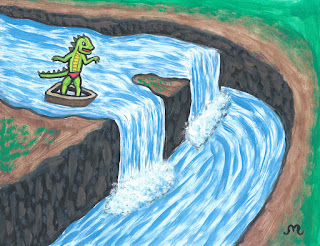How Does Google Search Work?
Google has become an integral part of modern life. Not only is
it the world’s most popular search engine with over 1.2 trillion searches per
year worldwide, but it also houses over 1,000,000,000 gigabytes of information.
How exactly is Google to navigate through all of this data and return the
information we ask for?
Well, in order to navigate the World Wide Web, you need to
start with an insect. Specifically: a spider.
The Google Search process starts with a “Web Spider” or “Web
crawler” program, that systematically browses billions of web pages and copies them
into the Google storage servers.
The Google “Indexer” takes over from there and counts the frequency
of each word (“hits”) on each webpage. In addition to the hits, the indexer also
takes note of qualitative information such as the word’s position in a page, an
approximation of font size, and capitalization. This information is then used by
a program called “PageRank”.
PageRank is a brilliant algorithm that assigns “rank” to
pages that are cited from many web pages. Word count, relevance of terms, font
size, and many other variables are compiled into a simple rank value. The Indexer
then distributes these hits along with their ranks into sets called “barrels”.
To see all these functioning parts together, let’s use an
example. Say you search Google for the “best pizzeria in the united states”.
The first thing the spiders (Google calls their spiders
“Googlebots”) do is break apart the search entry into its key terms. In this
case they would be “best”, “pizzeria”, and “united states”.
The engine would first break apart the search entry into its
key terms. In this case they would be “best”, “pizzeria”, and “united states”.
The search engine then scans through barrels and returns the page that has the highest
page rank.
And in case you were wondering, the best pizzeria in the
United States, as ranked by the number one search result The Daily Meal, is Frank Pepe Pizzeria Napoletana in Yonkers, New York.



Comments
Post a Comment